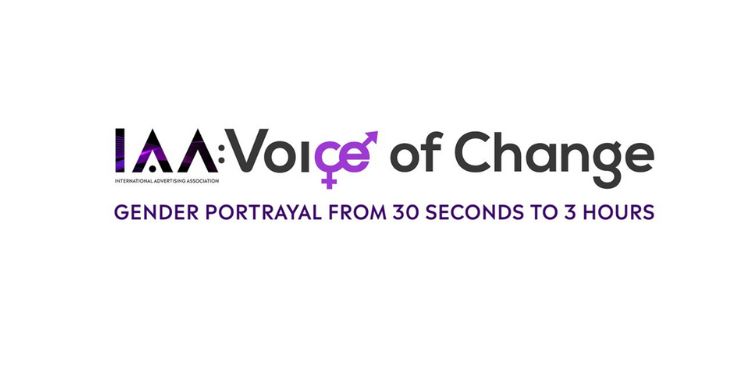The International Advertising Association (IAA) India chapter hosted a day-long event themed ‘Voice of Change: Gender Portrayal from 30 seconds to 3 hours’ in Mumbai on 29th July 2022.
The initiative was aimed at addressing gender sensitivity in advertising and communication, following the launch of a research report by the Geena Davis Institute on Gender in Media launched last year, with UNICEF.
Prominent voices spoke about the need to ‘Break the Bias’ on gender depiction.
The Chief Guest at the summit, Poonam Mahajan, MP, North Central Mumbai, spoke about her upbringing in a family where her brother and she were treated equally. From being a pilot, she started her political career in 2006 and was confident in winning the election but faced a big defeat in 2009, she recalled. In 2014 she won the elections followed by another win in 2019. The journey, breaking the stereotypes, was very challenging, noted Mahajan.
Being made President of the BJP India Youth Wing, a post hitherto held by men, was a big honour for Mahajan, the first woman to occupy the post. She tried to push for 50 pc office bearers to be women in her team but managed 25 pc at the completion of her four-year term. She noted that Tejasvi Surya, who took over, has ensured that there are even more women office bearers in the youth wing.
Mahajan said she admires Nirmala Sitharaman, India’s first woman Finance minister and Defence Minister of the country who has led by example and demonstrated the difference and made a tanbile impact to empower every woman. She also cited the case of Draupadi Murmu, the President of India who was sworn in only last week as inspirational.
Actor Vidya Balan quipped that after winning an award for ‘The Dirty Picture,’ she became brand ambassador for cleanliness campaigns. Speaking of the Nirmal Bharat Abhiyan ‘Jahan Soch Wahan Shauchalaya’ campaign, she recollected her own personal experience during a shoot at a village, three hours away from Benaras, without a loo on the way. The campaign was very successful and development was seen at many places, noted Balan, touching on another key avenue to empower women. She is also associated with UNICEF.
She mentioned about her gaining weight for some time due to hormonal issues. During that admittedly tough period, she recalled directors asking her to lose weight. Her response?, “This is the way I look and in this body and shape I could seduce anyone.”
Then she got a role in the film ‘Tumhari Sulu,’ where the wife from a middle class family goes for a late night RJ job.
She remarked, “Earlier I wanted to look good, be perfect and wanted people to comment but now I just want to be myself and the freedom is most beautiful and I am much happier. There’s no standard of beauty, it just lies in the eyes of the beholder.”
Speaking on the ‘item numbers’ in films, she commented that with the awareness, they are not as welcomed like before. Today, calling a female ‘Cheez badi hai mast mast’ is no more a compliment, she underlined.
With producers re-evaluating choices, there is a relative change in gender portrayal and more films are looking at men and women as equal stakeholders in a relationship, said the award-winning actor. Content makes a difference, films have the largest reach, and if it has to tell a story in different way it has an accelerated effect, surmised Balan.
Dr. AL Sharada, Director, Population First, presented an analysis based on her reviews of advertisements from a gender perspective over the last 10 years, for a trade publication.
She noted that the recent Layer’r shot ad and one for Cred featuring former cricketer and commentator Ravi Shastri, were gender offensive with scores of 0-1 (/5). She ranks gender insensitive ads 1-2, gender stereotypical 2-3, gender non-stereotypical 3-4 and gender transformative 4-5.
She feels the needle is moving slowly but steadily. The year 2020 saw a lot of ads from categories like finance, health & wellness that were inclusive and gender sensitive due (to Covid19), observed Dr Sharada, while jewellery, accessories, clothing ads spoke about aspirations of women and projected them in a new light. “There are ads on LGBTQIA portrayed so well which could not be imagined five years back,” she posed.
Dr Sharada also observed that automobile ads that were a bastion of men have started featuring women in the driver’s seat. A Horlicks ad, saw the health drink brand feature a young woman changing the tyre of her car, with her mother and sister.
If we start seeing the world around us from a gender lens and view all as equals, the communication we develop will also be gender sensitive, surmised the speaker.
Prasun Basu, Head of Growth and Digital Transformation, Kantar, spoke on advertising playing a huge role in society, going beyond just promoting brands. If the ads are gender progressive with positive gender portrayal, it adds extra to the brand and business and then the convergence happens, he observed.
At a Kantar awards for creative excellence, the speaker revealed that three of the eight winners were related to gender portrayal. One of them was for Vim liquid (below).
The speaker noted that positive gender portrayal in advertising builds extra brand equity or power, making the case for mainstreaming such positive portrayals. Such portrayals can add meaningfulness and differentiation to the brand, he surmised.

















